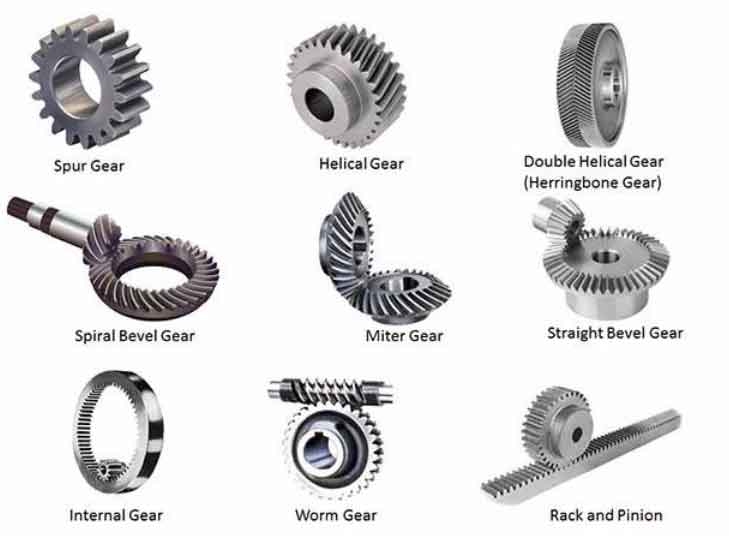Herringbone gears and rack and pinion systems are both widely used in mechanical applications to transmit rotational motion into linear motion or vice versa. While they serve similar purposes, there are distinct differences between these gear types. Let’s compare them in terms of design, efficiency, load capacity, backlash, and applications:

- Design:
- Herringbone Gears: These gears consist of two helical gear sections with opposite helix angles. The teeth are inclined in a V shape, resembling a herringbone pattern. The design allows for smooth and quiet operation.
- Rack and Pinion: This system consists of a linear gear called a rack and a rotational gear called a pinion. The rack has straight teeth, while the pinion has a cylindrical shape with teeth that engage the rack.
- Efficiency:
- Herringbone Gears: Due to their helical tooth design, herringbone gears offer better contact between the teeth compared to spur gears, resulting in higher efficiency.
- Rack and Pinion: Rack and pinion systems are generally efficient but may have slightly lower efficiency compared to herringbone gears due to friction and sliding between the rack and pinion teeth.
- Load Capacity:
- Herringbone Gears: The herringbone gear design provides increased load capacity and better torque transmission capability compared to spur gears.
- Rack and Pinion: The load capacity of a rack and pinion system depends on the size, material, and design of the rack and pinion. However, they are generally capable of handling high loads.
- Backlash:
- Herringbone Gears: The herringbone gear design inherently reduces or eliminates axial backlash, resulting in smoother and more precise motion.
- Rack and Pinion: Rack and pinion systems may have some backlash due to clearance between the teeth, which can result in a slight amount of lost motion or imprecise positioning.
- Applications:
- Herringbone Gears: Herringbone gears are commonly used in high-speed and high-power applications such as industrial machinery, automotive transmissions, and heavy-duty equipment.
- Rack and Pinion: Rack and pinion systems are frequently employed in applications that require linear motion, such as steering systems in automobiles, CNC machines, robotics, and linear actuators.
Herringbone gears excel in high-power and high-speed applications, offering high efficiency, load capacity, and reduced backlash. Rack and pinion systems are well-suited for converting rotational motion to linear motion and find extensive use in various mechanical systems requiring precise positioning and control. The choice between these gear types depends on specific application requirements, space limitations, load capacity, and desired performance characteristics.
